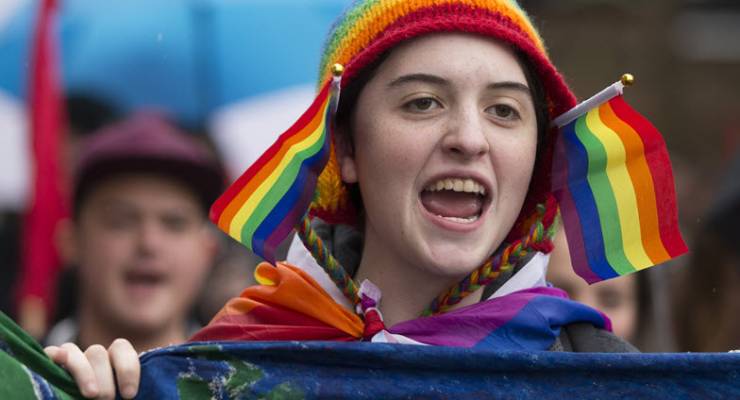
Parliament has wrapped up for another year, with no clear resolution on the matter of anti-discrimination measures for queer and trans students in religious schools.
This bill, which came following outcry from the Ruddock review into religious protections, should have been relatively simple. Instead, five of the review’s recommendations will now be referred to the Australian Law Reform Commission, which will likely not report back until the second half of next year.
Attorney-General Christian Porter justified this as an attempt to understand how to balance the rights of LGBTIQ students with religious schools’ right to “maintain conduct and teaching in accordance with their faith”. The Human Rights Law Centre’s Anna Brown disagrees, stating, “we don’t need an inquiry to tell us that kids and teachers should be protected at school”.
Either way, queer and trans students will have to wait until late next year for a protection bill that ultimately receives bipartisan support. And so, yet again, young LGBTIQ people are let down by a government that has failed them.
It’s difficult to ignore the ways queer young people have been made into a kind of scapegoat of the culture wars in the past few years.
Safe Schools — a program developed to provide a safe and supportive learning environment for young queer and trans people — was mired by reactionary comments from the right. It was spun as some kind of indoctrination into “radical queer and gender theory” and, ultimately, axed. Young people were forced to pay the price.
Last year, reactionaries again selected young people (and schools) as a target for alarmist rhetoric around the “unintended consequences” of marriage equality. Who could forget the Australian Christian Lobby’s spooky advertisement about “widespread and compulsory” changes that would follow the legislation? A concerned mother fought back tears to explain that her son’s school told him he could “wear a dress” if he liked.
Just last week, Barnaby Joyce extended this moral panic. Speaking specifically about discrimination of trans students in schools, he issued a bumbling, half-baked statement expressing fear of the “complications” that he’d have to “deal with” if, after sending a child to an all-girls school, it turned out that young trans-identified women would be allowed to share a restroom. It is “not fair on the larger school unit,” Joyce said.
The message from conservatives has been clear and consistent: by vocally opposing LGBTIQ equality and education, you are protecting young people. But it couldn’t be further from the truth. It’s a bizarre line in the sand for conservatives too afraid to confront the reality that queer and trans people exist — let alone that they might go to the same school as their child.
I write this as an adult queer woman who grew up attending a Catholic, all-boys high school in the mid-2000s, so this growing trend is tinged with a level of personal attachment. In 2019, it’s vitally important that we prioritise and centre young people when we stand up and challenge homophobia and transphobia. Pay attention to the ways young people in particular are targeted by the right, and actively include them in your activism. Perhaps most importantly, it’s time to listen to young queer and trans people when they discuss these issues, and acknowledge them as the experts in this whole thing.
When the government treats these issues as if they don’t affect real people, as abstract fodder for a protracted ideological debate, it is children who suffer the consequences in real life.







Don’t expect an improvement in the situation until all the Delcons are thrown out of their seats.